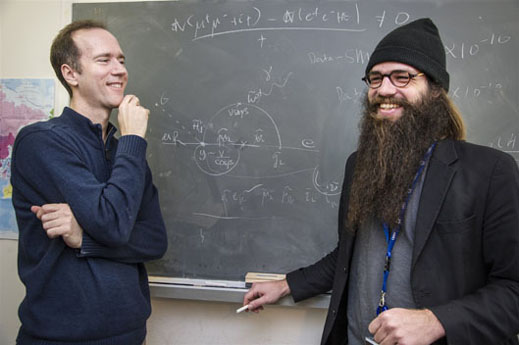This is the kind of news I like. If you thought your new mobile phone was the best ever made, you’re wrong. What about a phone using neutrinos? What about a neutrinophone?
Jeff Nelson is the Cornelia B. Talbot Term Distinguished Associate Professor of Physics at William & Mary and in this article, he explains that the neutrinophone demonstration was a side project stemming from neutrino research at the Fermi National Accelerator Laboratory.
About the neutrinos:
Neutrinos are mysterious subatomic particles emitted in unimaginable numbers by nuclear reactions. Despite their high numbers, scientists are just now learning about the characteristics of neutrinos. William & Mary’s physicists are involved in several large multinational collaborations aimed at learning about the properties of neutrinos. In addition to MINERvA and the other Fermilab experiments, William & Mary researchers are involved in other neutrino investigations, most notably the Daya Bay initiative in China.
How it works:
The beam of neutrinos travels through hundreds of meters of rock on the way to the MINERvA detector, which Nelson explains is designed to study neutrino interactions in detail. For communication over the neutrinophone, the physicists used a simple 1-0 binary code. “If you saw neutrinos, it was a zero; if there weren’t any neutrinos, it was a one,” he explained. “There are standard encoding patterns, ASCII is one of the ones that is used on the computer that tell you what letter corresponds to a series of so many digits of binary bits.”
And the pbest part for the end:
As a practical communications tool, the neutrinophone sits on the border of science and science fiction. Nelson notes that Star Trek characters use neutrino communications, but there are a number of scientific and engineering challenges to creating an interplanetary neutrinophone.
My geek friends and dear Star Trek fans, our dream will, one day, become a reality!


